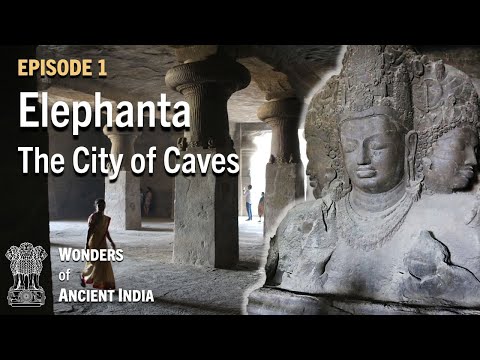
Nestled on an island in the Arabian Sea, just outside the bustling metropolis of Mumbai, lies one of India’s most enigmatic and awe-inspiring ancient sites—the Elephanta Caves. A testament to India’s rich cultural tapestry and spiritual depth, these caves offer a glimpse into a world where art and devotion merge seamlessly. This episode of “Wonders of Ancient India” takes you on a journey through these magnificent caves, exploring their history, architecture, and the mysteries that they hold.
#### The Island and Its History
The island of Elephanta, originally known as Gharapuri (meaning ‘the city of caves’), is spread across an area of about 16 square kilometers. It is primarily known for its cave temples that are carved out of solid basalt rock. Historians believe that most of the work was carried out between the 5th and 8th centuries when the region was under the influence of various dynasties including the Konkan Mauryas.
#### Discovering The Caves
The journey to Elephanta is as fascinating as exploring the caves themselves. A short ferry ride from Mumbai leads you to this spectacular location, where ancient artistry meets natural beauty. Upon arrival, a series of steps leads visitors up to the main cave complex. These caves are primarily dedicated to Lord Shiva and showcase Hinduism’s rich narratives through stone sculptures and carvings.
#### Architectural Marvels
The main cave, also known as Cave 1, houses a stunning array of artworks including statues, pillars, and rock-cut reliefs. It is here that one can witness the famous Trimurti sculpture—a majestic 20-foot high image representing three forms of Shiva: as Creator, Protector, and Destroyer. This iconic sculpture captures not only an artistic mastery but also embodies deep spiritual meaning.
Adjacent to this are other panels depicting various episodes from Hindu mythology including Shiva’s marriage to Parvati (the mountain goddess), his manifestation as Ardhanarishvara (a composite form with his consort Parvati), and his fierce aspect as Mahadeva slaying Andhaka (the demon of ignorance).
#### Symbolism and Interpretation
The carvings in Elephanta are not mere decorations; they carry profound symbolic meanings intended to instruct and enlighten viewers about philosophical concepts central to Hindu theology. The intricate workings suggest a high degree of intellectual sophistication among its creators who sought to pass on important religious teachings through visual means.
#### Conservation Challenges
Despite their historical significance and cultural value, the Elephanta Caves face numerous conservation challenges. The saline air from the sea accelerates erosion while human intervention has also taken its toll on this UNESCO World Heritage Site. Efforts by various organizations aim at preserving these relics for future generations but achieving this requires continuous attention and resources.
#### Conclusion: A Portal Through Time
Visiting Elephanta offers more than just an archaeological tour; it is akin to walking through pages of time where each sculpture tells its own story—a saga woven from faith, mythology, artistry, and human endeavor. For those intrigued by history or spirituality or simply in awe of human creativity expressed centuries ago through stone carvings—Elephanta stands out as a beacon among India’s numerous wonders.
As we continue our series “Wonders of Ancient India,” we invite you to reflect on these relics not just as remnants from past civilizations but as living narratives that continue to inspire awe even today in our modern world full steam ahead with technological advancements yet still anchored in its illustrious past.
